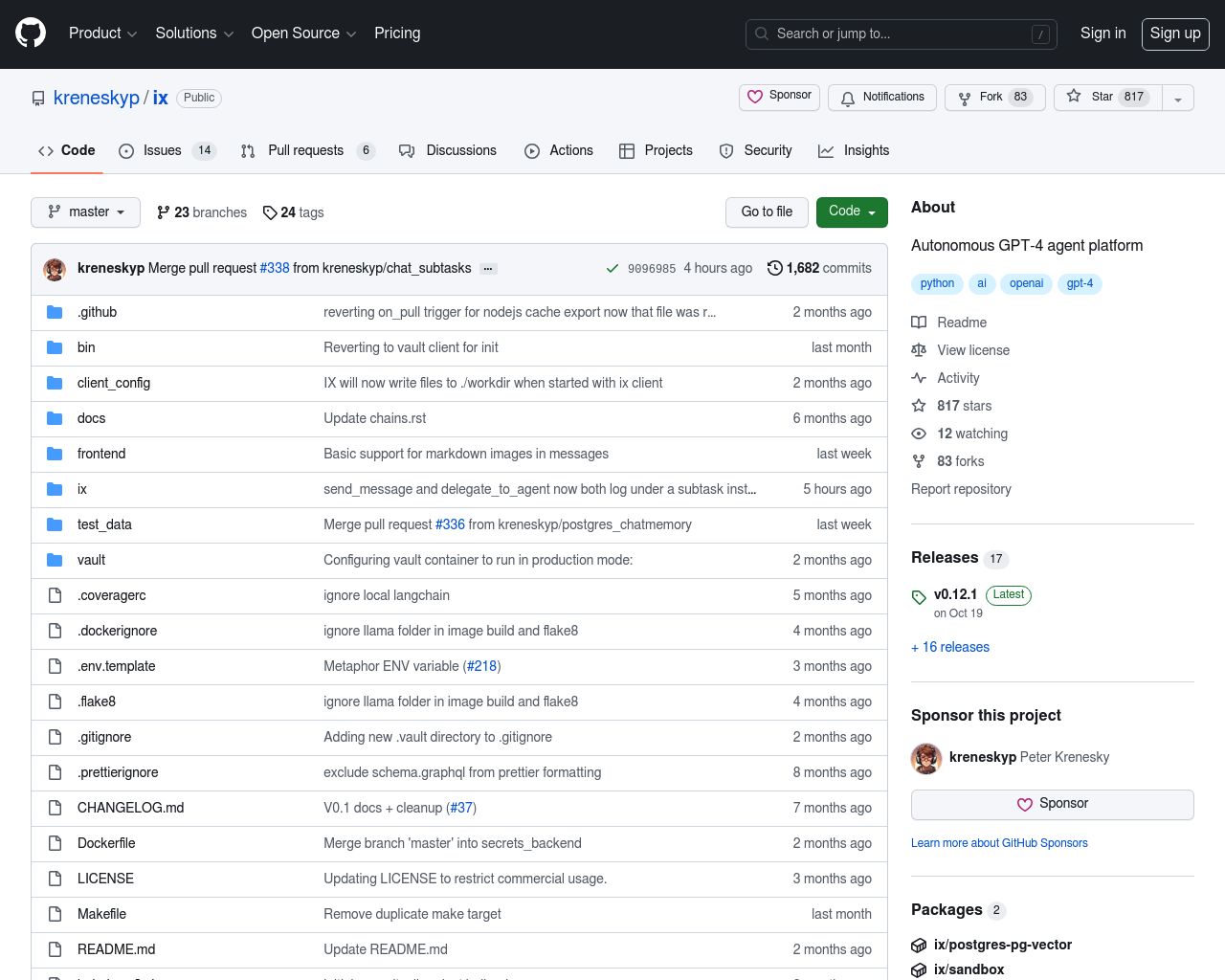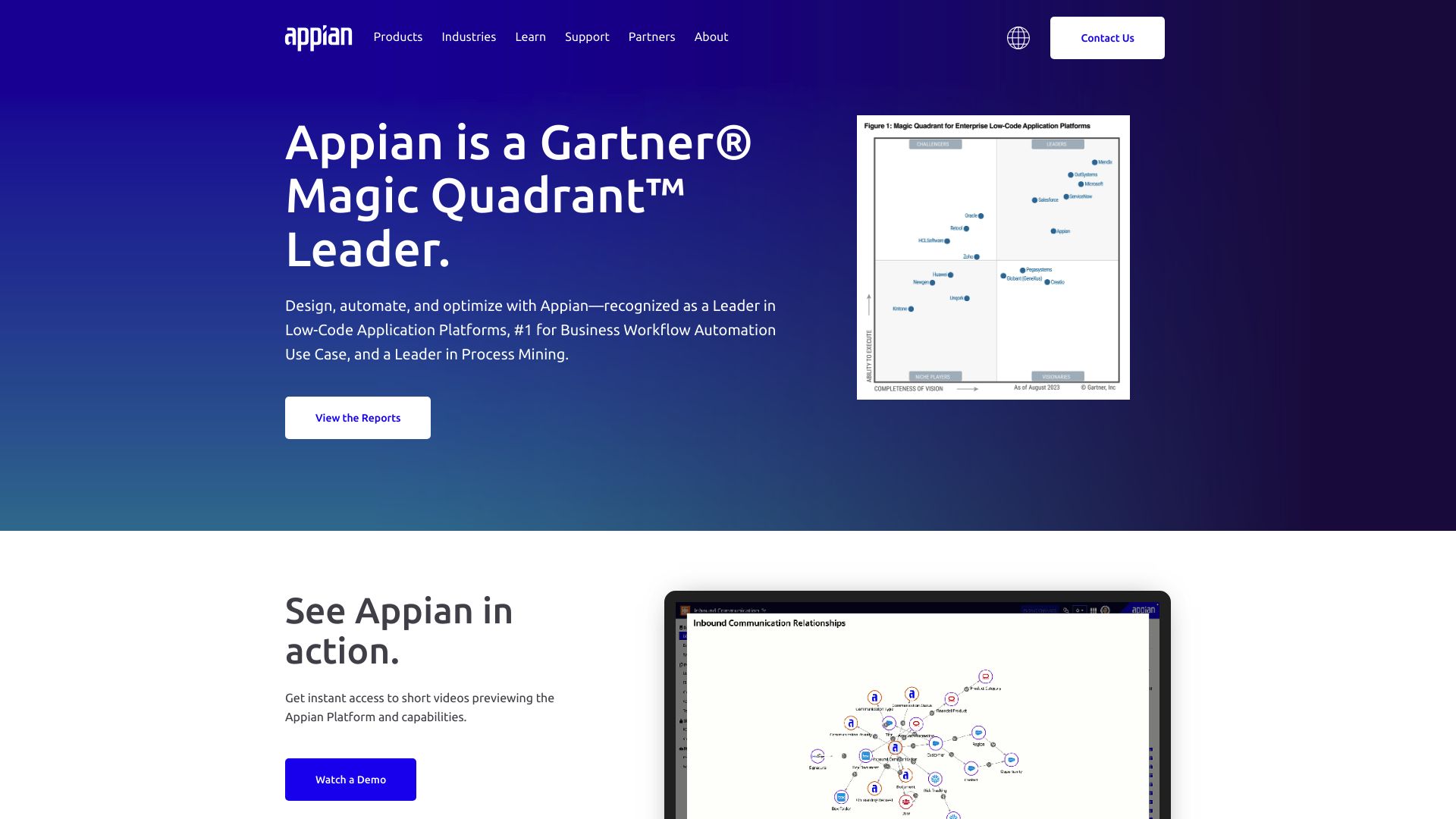Agent iX vs. Appian: AI Integration Approaches Compared
AI agent builders transform the landscape of software development and business automation. Agent iX vs. Appian offer distinct approaches to AI integration, each with unique strengths. Agent iX excels in building collaborative, semi-autonomous language model agents, while Appian focuses on low-code AI integration for streamlined business processes.
This comparison explores their core features, capabilities, and limitations to help developers, business leaders, and AI enthusiasts make informed decisions. We’ll also introduce SmythOS, a comprehensive platform that combines the strengths of both systems and addresses their limitations, offering a versatile solution for AI agent development and deployment across various industries and use cases.
Agent iX Overview
Agent iX empowers developers to create, host, and manage AI agents through an open-source platform. The software focuses on building semi-autonomous large language model agents that offer scalability and adaptability across various domains.


Agent iX distinguishes itself with its ability to run multiple agents in parallel, fostering collaboration and knowledge sharing. This feature allows customization and utilization of different models based on specific requirements, promoting a flexible approach to task automation. The platform’s no-code editor provides an intuitive graphical interface for creating and testing AI agents, enabling users to construct cognitive logic through drag-and-drop interactions.
Agent iX distinguishes itself with its ability to run multiple agents in parallel, fostering collaboration and knowledge sharing.
The platform offers diverse capabilities including web research, task automation, code generation, and API integration for various use cases. Agent iX includes a smart input feature that enhances user experience by auto-completing agent mentions and task-related artifacts. Its dockerized setup ensures scalability and efficient resource management.
While Agent iX provides powerful tools for AI agent development, it lacks some advanced features. The platform does not explicitly mention support for multimodal inputs, data encryption, or hosted vector databases. Additionally, it does not specify features for constrained alignment or detailed audit logs for analytics. These limitations may impact its suitability for certain enterprise-level applications or highly regulated industries.
Appian Overview
Appian empowers businesses to integrate AI capabilities into their workflows through a low-code platform. Their solution focuses on making artificial intelligence accessible and flexible for various industries and applications.


The platform’s key strength lies in its low-code AI integration, allowing users to build custom AI and machine learning models without extensive data science expertise. This democratization of AI enables quick deployment and makes it accessible to non-specialists. Appian offers prebuilt AI capabilities such as document classification, extraction, email classification, and generative AI skills like prompt building and text summarization.
Appian empowers businesses to integrate AI capabilities into their workflows through a low-code platform… making artificial intelligence accessible and flexible for various industries and applications.
Appian prioritizes data privacy and security, ensuring that AI models and data remain private and under the user’s control. This feature is crucial for businesses concerned about protecting sensitive information. The platform also integrates with advanced AI services like OpenAI/ChatGPT, enhancing natural language processing capabilities for tasks such as email automation and document management.
The Enterprise Copilot feature stands out, allowing users to create knowledge sets from curated documents for instant, accurate information retrieval. Appian’s extensive automation tools combine AI with robust process management capabilities, improving efficiency in business operations. However, the platform may have limitations in areas such as multimodal support and certain specialized AI functionalities.
Appian’s vision centers on seamlessly integrating AI into business automation, aiming to enhance human work by delegating routine tasks to intelligent machines. By making AI more accessible through their low-code platform, Appian seeks to democratize AI technology, making it practical for businesses of all sizes. While the platform offers significant advantages in AI integration and process automation, potential users should consider their specific needs and technical requirements when evaluating Appian against other AI agent builders.
Feature Comparison
Agent iX and Appian offer distinct approaches to AI integration, with key differences in their core capabilities and target use cases. Agent iX focuses on building semi-autonomous large language model agents, enabling multiple agents to run in parallel for collaborative task execution. Its no-code editor provides an intuitive interface for creating AI workflows without extensive programming knowledge. In contrast, Appian prioritizes low-code AI integration for business process automation, offering prebuilt AI capabilities and seamless integration with existing workflows.
While both platforms support AI agent development, Agent iX provides more flexibility in customizing individual agents and their interactions. It excels in web research, task automation, and code generation scenarios. Appian, on the other hand, shines in enterprise-level AI integration, offering robust process management tools and prioritizing data privacy and security for sensitive business operations.
Notable feature gaps exist between the two platforms. Agent iX lacks explicit support for multimodal inputs, data encryption, and hosted vector databases, potentially limiting its suitability for certain enterprise applications. Appian, while strong in business process integration, may not offer the same level of granular control over individual AI agents as Agent iX. These differences highlight the importance of aligning platform choice with specific project requirements and organizational needs.
| Agent iX | Appian | SmythOS | |
|---|---|---|---|
| CORE FEATURES | |||
| Hosted Agents (Dev, Production) | ❌ | ❌ | ✅ |
| Environments (Dev, Production) | ❌ | ✅ | ✅ |
| Memory & Context | ❌ | ✅ | ✅ |
| Autonomous Agents | ❌ | ❌ | ✅ |
| Explainability & Transparency | ❌ | ✅ | ✅ |
| Debug Tools | ❌ | ✅ | ✅ |
| Multimodal | ❌ | ✅ | ✅ |
| Multi-Agent Collaboration | ✅ | ❌ | ✅ |
| Audit Logs for Analytics | ❌ | ✅ | ✅ |
| Work as Team | ❌ | ✅ | ✅ |
| Agent Work Scheduler | ✅ | ❌ | ✅ |
| SECURITY | |||
| Data Encryption | ❌ | ✅ | ✅ |
| OAuth | ❌ | ✅ | ✅ |
| IP Control | ❌ | ✅ | ✅ |
| COMPONENTS | |||
| Foundation AIs | ✅ | ❌ | ✅ |
| Huggingface AIs | ❌ | ❌ | ✅ |
| Zapier APIs | ❌ | ❌ | ✅ |
| Classifiers | ❌ | ✅ | ✅ |
| Data Lakes | ❌ | ✅ | ✅ |
| DEPLOYMENT OPTIONS (EMBODIMENTS) | |||
| Deploy as API | ❌ | ✅ | ✅ |
| Deploy as Webhook | ❌ | ✅ | ✅ |
| Staging Domains | ❌ | ✅ | ✅ |
| Production Domains | ❌ | ✅ | ✅ |
| API Authentication (OAuth + Key) | ❌ | ✅ | ✅ |
| Deploy as Site Chat | ❌ | ❌ | ✅ |
| Deploy as Scheduled Agent | ❌ | ❌ | ✅ |
| Deploy as GPT | ❌ | ❌ | ✅ |
| DATA LAKE SUPPORT | |||
| Hosted Vector Database | ❌ | ❌ | ✅ |
| Sitemap Crawler | ❌ | ❌ | ✅ |
| YouTube Transcript Crawler | ❌ | ❌ | ✅ |
| URL Crawler | ❌ | ❌ | ✅ |
| PDF Support | ❌ | ✅ | ✅ |
| Word File Support | ❌ | ✅ | ✅ |
| TXT File Support | ❌ | ✅ | ✅ |
Best Alternative to Agent iX and Appian
SmythOS offers a superior alternative to Agent iX and Appian for AI agent development and deployment. Our platform combines powerful capabilities with exceptional ease of use, enabling rapid creation of sophisticated AI solutions for any use case. SmythOS outshines competitors with its intuitive visual builder, expansive feature set, and unmatched flexibility.
Unlike Agent iX’s limited focus on semi-autonomous language models, SmythOS provides a comprehensive ecosystem for building truly autonomous, multi-modal AI agents. Our drag-and-drop interface surpasses Appian’s low-code tools, allowing even non-technical users to assemble complex AI workflows effortlessly. SmythOS agents seamlessly integrate advanced natural language processing, computer vision, and other AI capabilities to tackle diverse tasks.
SmythOS provides a comprehensive ecosystem for building truly autonomous, multi-modal AI agents… allowing even non-technical users to assemble complex AI workflows effortlessly.
We deliver enterprise-grade scalability and security that Appian lacks. SmythOS agents can be deployed across multiple environments with robust access controls, data encryption, and audit logging. Our platform also offers unparalleled customization through support for custom AI models, APIs, and integrations — capabilities missing from both Agent iX and Appian.
Perhaps most importantly, SmythOS removes all limits on potential use cases. While competitors constrain you to narrow applications, our flexible architecture allows you to build AI agents for any scenario imaginable — from intelligent chatbots and virtual assistants to autonomous research agents and creative AI tools. With SmythOS, your innovation is bounded only by your imagination.
SmythOS removes all limits on potential use cases… our flexible architecture allows you to build AI agents for any scenario imaginable
By combining power, simplicity, and unlimited possibilities, SmythOS stands apart as the clear choice for organizations seeking to unlock the full potential of AI. Our platform empowers you to bring transformative AI solutions to life faster and more easily than ever before.
Conclusion
Agent iX, Appian, and SmythOS each offer unique approaches to AI integration and agent development. Agent iX excels in building semi-autonomous language model agents with collaborative capabilities, while Appian focuses on low-code AI integration for business process automation. SmythOS, however, stands out as the superior choice for its comprehensive feature set and versatility.
SmythOS combines the strengths of both platforms and goes beyond. Its intuitive drag-and-drop interface rivals Agent iX’s no-code editor, making AI development accessible to users of all skill levels. Unlike Appian’s focus on business process automation, SmythOS offers a broader range of applications, from chatbots and APIs to scheduled agents and GPT deployments.
What truly sets SmythOS apart is its extensive integration ecosystem, supporting over 300,000 integrations and various AI models. This flexibility allows for seamless incorporation into existing workflows and systems. SmythOS also addresses the limitations of both Agent iX and Appian by offering robust features like multimodal support, data encryption, and hosted vector databases, making it suitable for enterprise-level applications and highly regulated industries.
For those looking to harness the full potential of AI in their projects or businesses, SmythOS offers a risk-free way to get started. With a generous free plan that includes unlimited AI agents and a 30-day money-back guarantee, you can explore the platform’s capabilities without commitment. Dive into our comprehensive documentation to understand how SmythOS can revolutionize your AI development process and deploy AI agents across various platforms with ease. Experience the future of AI integration and unlock new possibilities for innovation and efficiency with SmythOS.
Last updated:
Disclaimer: The information presented in this article is for general informational purposes only and is provided as is. While we strive to keep the content up-to-date and accurate, we make no representations or warranties of any kind, express or implied, about the completeness, accuracy, reliability, suitability, or availability of the information contained in this article.
Any reliance you place on such information is strictly at your own risk. We reserve the right to make additions, deletions, or modifications to the contents of this article at any time without prior notice.
In no event will we be liable for any loss or damage including without limitation, indirect or consequential loss or damage, or any loss or damage whatsoever arising from loss of data, profits, or any other loss not specified herein arising out of, or in connection with, the use of this article.
Despite our best efforts, this article may contain oversights, errors, or omissions. If you notice any inaccuracies or have concerns about the content, please report them through our content feedback form. Your input helps us maintain the quality and reliability of our information.
